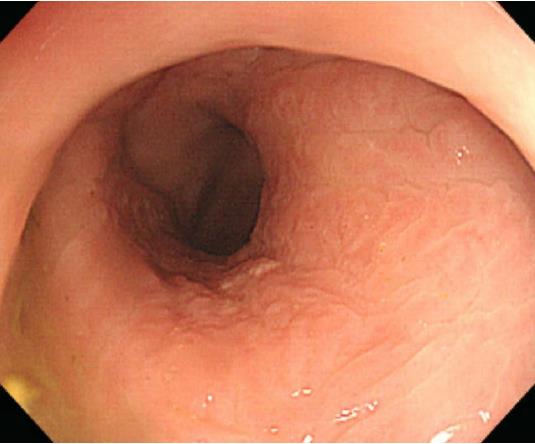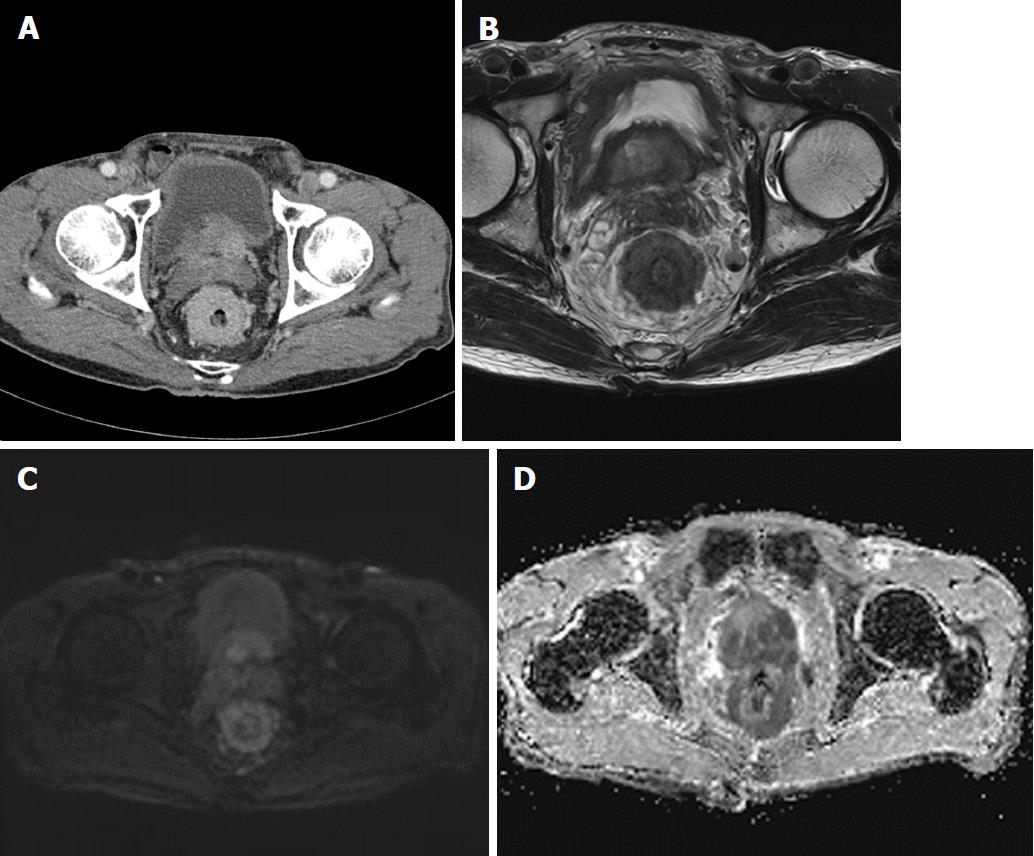Copyright
©The Author(s) 2018.
World J Clin Cases. Oct 26, 2018; 6(12): 554-558
Published online Oct 26, 2018. doi: 10.12998/wjcc.v6.i12.554
Published online Oct 26, 2018. doi: 10.12998/wjcc.v6.i12.554
Figure 1 Sigmoidoscopic imaging showing narrowing of the rectal lumen with normal overlying mucosa.
Figure 2 Contrast-enhanced computed tomography and pelvic magnetic resonance imaging of secondary rectal linitis plastica from prostate cancer.
A: Contrast-enhanced CT shows circumferential rectal wall thickening with marked enhancement and minimal perirectal fat stranding; B: T2-weighted images; C: Diffusion-weighted images. On T2-weighted images and diffusion-weighted images, a target sign is present; D: Apparent diffusion coefficient map, the prostate shows infiltrative lesions with low ADC values, compatible with prostatic adenocarcinoma.
Figure 3 Histological images of metastatic prostate adenocarcinoma obtained from transanal full-thickness excisional biopsy.
A: Hematoxylin and eosin (HE) staining showed a moderate to poorly differentiated adenocarcinoma characterized by tumor cells diffusely infiltrated into submucosa and muscularis propria, sparing the mucosal layer (original magnification ×100); B: Immunohistochemical stains were performed and the tumor cells were positive for prostate specific antigen (PSA, original magnification ×100).
- Citation: You JH, Song JS, Jang KY, Lee MR. Computed tomography and magnetic resonance imaging findings of metastatic rectal linitis plastica from prostate cancer: A case report and review of literature. World J Clin Cases 2018; 6(12): 554-558
- URL: https://www.wjgnet.com/2307-8960/full/v6/i12/554.htm
- DOI: https://dx.doi.org/10.12998/wjcc.v6.i12.554











